Table of Contents
- What is reputation management?
- Why is online reputation management important?
- What are the benefits of online reputation management?
- How to create a reputation management strategy
- How to improve online reputation management
- How to automatically protect your brand reputation on social media
- 7 best online reputation management tools
- Protect your brand reputation – it’s one of your most precious assets
Managing your online reputation is perhaps trickier than ever, with consumers having so much freedom to voice their opinions online.
Here’s what you can do to stay on top of the conversations around your brand and use online reviews and ratings to your brand’s advantage.
- What is reputation management?
- Why is online reputation management important?
- What are the benefits of online reputation management?
- How to create a reputation management strategy
- How to improve online reputation management
- How to automatically protect your brand reputation on social media
- 7 best online reputation management tools
- Protect your brand reputation – it’s one of your most precious assets
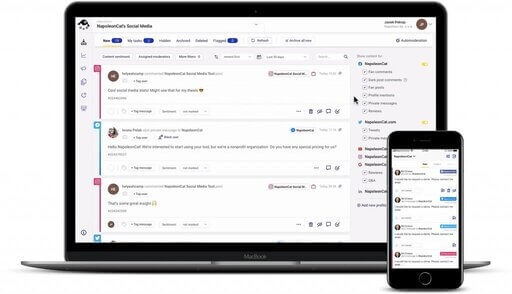
Manage reviews from Google My Business, Google Play Store, and Apple App Store – all in one place
Use NapoleonCat to manage all of your comments, messages, reviews, etc. – with an all-in-one social media tool.
What is reputation management?
Let’s start with brand reputation first. It’s how people – your existing and potential customers – see you. What they think of you. And, most of all, what information and opinions they share about you (mostly online these days.)
And that’s the essence of reputation – the opinions, reviews, ratings, and sentiments that are readily available and shared online for other people to see.
Obviously, you can’t manage what people think (though you can influence it with your actions.) But you can manage the conversations around your brand, for example:
- responding to reviews
- reporting and deleting fake reviews
- escalating customer issues and resolving them
- fixing obvious mistakes and responding to brand crises
- taking part in those conversations as a brand to show your customers that you care.
Reputation management also goes way beyond just online reviews. It can include things like:
- customer service inquiries,
- online mentions, including on various websites, forums, and social media networks,
- and a whole lot more.
So, in a nutshell, reputation management is actively taking part in what’s said and shared about your brand in all corners of the Internet (and beyond) to build the kind of reputation you want for your brand.
Why is online reputation management important?
Your brand reputation is an invaluable asset. (Any brand who had to rebuild it after a PR crisis will know that.) And it affects all aspects of your brand activity:
- Your brand image – how your customers see you against your competitors.
- Brand loyalty – how loyal your customers are and how effective you are at retaining them and building an engaged brand community.
- Your employer brand – how potential employees see you and whether they want to work for you (or with you.)
- Brand trust – reputation is one of the pillars of brand trust, and trust is one of the keys to brand loyalty and building an engaged group of returning customers
- Customer advocacy – the better your reputation, the more customers will recommend you to others (and that’s also a free promotion channel for your brand.)
- Your revenue and sales – because the image you build will inevitably turn into how many people want to buy from you.

Protect your social media from offensive comments and SPAM
Automatically hide or delete comments containing spam under your organic posts and ads – with an all-in-one social media moderation tool.
What are the benefits of online reputation management?
Let’s break the above down a little more. Here’s what your brand – and your customers, because it is a win-win situation – gets when you manage your brand reputation.
- You build a positive brand image and greater brand visibility. And this means that when people think about a product or service in a given market category, they’ll immediately think of you as a good alternative. That’s what marketers call being “top of mind” – and essentially, it’s all about being the go-to in your market category (or one of the go-to’s in crowded market categories.) And about increasing the so-called share of voice for your brand against your competitors.
- You get more loyal customers. A strong brand reputation means people want to keep buying from you because they’ve had a positive customer experience. It’s an important tool for customer retention that’s unfortunately so often overlooked by brands (and yet an important source of revenue.)
- More people trust your brand. When you actively engage in reputation management, you show your customers you’re there for them. You respond to their questions, you help them with their issues, you fix things that need fixing. (As you can see, reputation management is indeed something else than just deleting negative comments and crisis management.)
And when customers trust you, your marketing gets so much easier and more effective. Because the people who trust you will become your brand advocates and recommend your products and services on their own.
- You have more control over the conversation about your brand in general. And this, as I said before, affects everything from your brand image to your bottom line.
How to create a reputation management strategy
As with any part of your marketing, reputation management needs a strategy – at least to be consistently successful. Here are some essential elements it should include:
- Define your goal. I mean, all strategies need to have one. Focus on the most important ones for your brand – whether that’s revenue or brand visibility (or both.)
- Define your KPIs – a.k.a. how you’re going to measure that goal. It could be brand sentiment, positive reviews and mentions, star ratings on Google and in app stores, etc. The more detailed you are, the easier it’s going to be to track your success.
Also, a solid analytics tool is essential to be able to track all of your results and adjust your tactics.
- Define the reputational risk (or risks.) This requires you to think ahead about what potential risks your brand is facing in connection with your products or services, marketing campaigns, also in the context of current world events and public perceptions. So you can create specific scenarios describing how you’re going to respond in case of a crisis.
- List your channels. Make it really clear where you’re doing the reputation management, e.g. the individual social media platforms, Google reviews, app stores for your mobile app, industry forums, customer service channels, etc.
- Define your workflows. Name people and teams responsible for the different aspects of your reputation management, like responding to customer feedback on different platforms, sending reviews to the product or tech teams, etc.
Include detailed scenarios to know what happens when an issue needs to be escalated quickly and when there’s an impending crisis to manage.
- Find the right tools. Luckily, there’s an abundance of tools to help automate some of the manual work related to reputation management, so spend some time looking for the right one for your brand’s needs. And make sure they’re all part of the workflows, with the right access levels given to the right people to use in specific scenarios.
- Get proactive. Don’t just respond to incoming customer feedback. Initiate feedback workflows that help you actively build your brand reputation. For example, this could be asking your customers to leave Google reviews after they buy from you or even rewarding them for leaving positive content.
You can do that across your marketing channels – for example, in your confirmation emails, regular surveys sent to your customers via different channels, or even on your product packaging. The key is not to leave it up to fate but to actively request feedback from your customers.
- Share the love, a.k.a. use positive customer feedback to create user-generated content across social media and social proof for your website and other channels. It’s one of the most potent types of content you can use (and you should definitely include it in your content marketing strategy.)

Protect your social media from offensive comments and SPAM
Automatically hide or delete comments containing spam under your organic posts and ads – with an all-in-one social media moderation tool.
How to improve online reputation management
- First of all, get involved in online conversations about your brand. The worst thing a brand can do when it comes to online reputation is leave things to fate and not react. When you don’t actively manage your reputation, you can’t improve it.
- Have a plan and strategy (see above) to know exactly what to do and when.
- Find tools that consolidate the different bits of customer feedback like comments, reviews, star ratings, and messages in one place. This will save you tons of time wandering around the Internet and tracking all the different channels separately and manually.
- Automate some of the manual work related to reputation management. (I’ll elaborate on that in the next section.)
- Ask for feedback – in surveys, emails, reminders, in physical stores. Essentially, wherever you can ask a satisfied customer to share their positive experience online.
How to automatically protect your brand reputation on social media
Speaking of automation, there are a few things you can do that can improve your reputation management processes, making them more efficient and more effective.
To do that, you need to create workflows that trigger automated actions based on incoming customer feedback. For this, you’ll need the right tool, like NapoleonCat’s Auto-moderation. It’ll let you automatically:
- Flag negative feedback on social media
- Hide spam and problematic or inappropriate comments (also from under your Facebook and Instagram ads)
- Instantly reply to frequently asked questions based on selected keywords
- Assign customer feedback to selected customer service team members, and keep a history of all customer conversations in one tool, organized into customer service tickets and customer profiles
- Translate comments, messages, and reviews, along with your responses.
- Automatically assign neutral, positive, or negative sentiment to customer conversations
Automation can be an invaluable resource in reputation management, especially as your feedback volume (and brand visibility) grows and you don’t want to overwhelm your customer service and social media marketing teams.
7 best online reputation management tools
Here are a few tools to look into that will help you organize your reputation management processes much more efficiently.
NapoleonCat
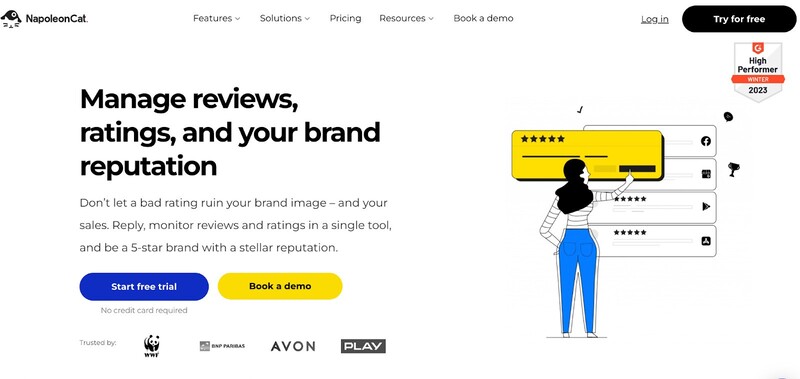
A social media and reputation management platform, NapoleonCat houses multiple tools under one roof, most notably in its Social Inbox. So, besides scheduling and analyzing your social media content, it will also let you:
- Collect all comments, messages, and reviews from across social media platforms, Google reviews, and mobile app stores in one dashboard
- Organize them into customer service tickets with the ability to assign sentiment, flag, reply to, hide, and assign to customer service team members to process
- Easily reply to comments under Facebook, Instagram, and TikTok ads that so often get overlooked, but can affect your brand reputation (especially when you’re fuelling the reach of someone’s negative reviews in a comment with your advertising budget)
- Track social media sentiment to see how customers perceive your brand
- Automate reputation and engagement reporting to always keep your stakeholders in the loop
- Track conversation history with individual customers, add notes, and assign relationship sentiment and tags to a customer profile
- Consult social media customer service tickets with external team members, collaborators, and clients
We highly recommend you test NapoleonCat completely for free – no credit card required 😉

Manage reviews from Google My Business, Google Play Store, and Apple App Store – all in one place
Use NapoleonCat to manage all of your comments, messages, reviews, etc. – with an all-in-one social media tool.
Qualitrics
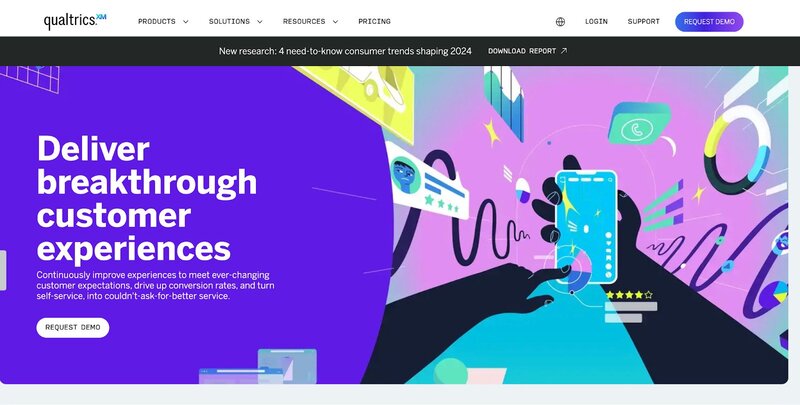
Qualitrics is an online reputation management platform that lets brands collect and manage feedback from customers and employees, analyze it, and act on it.
It includes features such as:
- surveys
- analytics, including competitive analysis
- review management
- social media management
- customer interaction insights across touchpoints.
Reviews.io
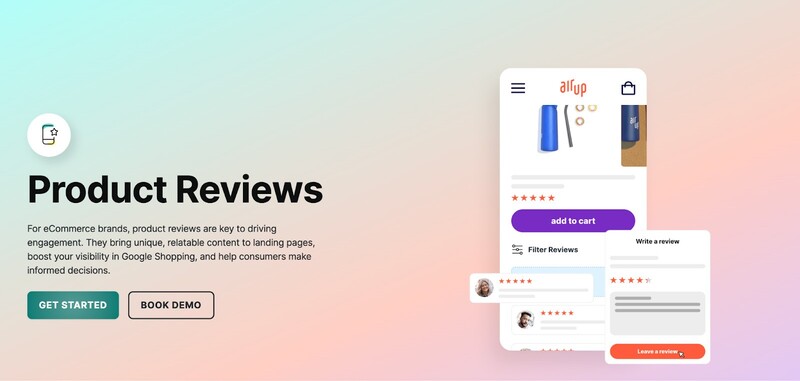
Reviews.io is a platform that’s specifically focused on collecting and managing online reviews, including product reviews and company reviews.
It integrates with social media networks, eCommerce platforms, messaging tools, and CRM platforms, also letting brands include customer reviews on their websites as user-generated content.
Birdeye
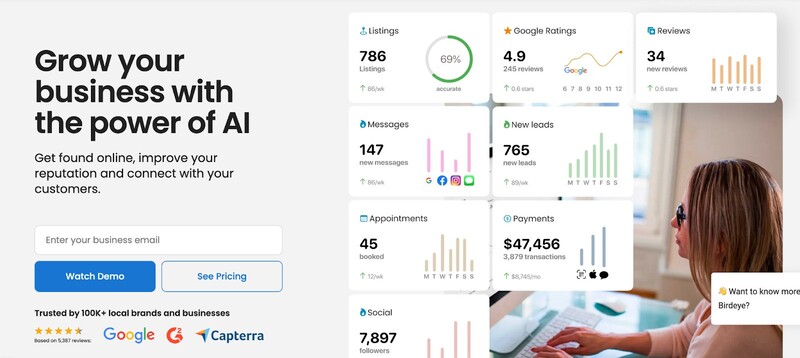
Birdeye is a comprehensive platform focused on reputation management for local businesses. It includes tools like:
- review management and monitoring with automated review requests
- automated, AI-generated replies
- sharing reviews on your website and social media channels
- customer surveys with analytics
- referral campaigns
- and more.
Podium

Podium is an AI-powered lead conversion platform with robust capabilities in review management, customer messaging, and surveys.
It lets you manage reviews across social media and industry review sites in one place and communicate with customers across channels, e.g., via calls, SMS, contact forms, and chats.
BrightLocal

BrightLocal is a local SEO tool focusing on agencies and multi-location brands to help them stay on top of their rankings in search engines and reputation across locations.
Besides review monitoring, it will let you do things like:
- audit your Google locations for improvement opportunities,
- track rankings,
- generate reports,
- and manage your Google listings.
All while helping your business rank higher in local search engine results.
Brand24
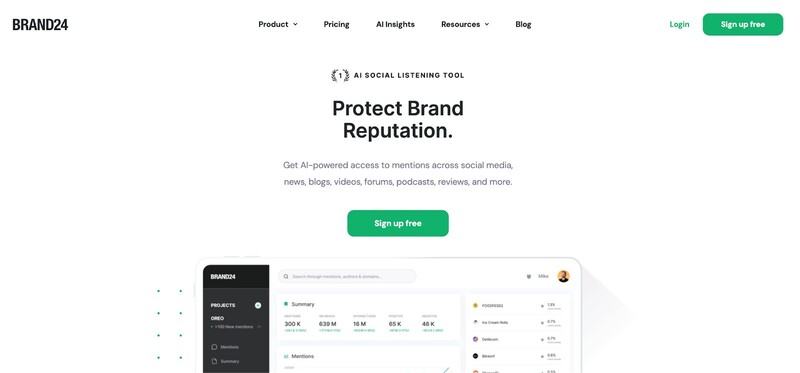
A social listening tool is invaluable for reputation monitoring. And Brand24 is one, helping you do things like:
- track conversations about your brand, including mentions across social media, blog, forums, and other online sites
- measure brand awareness, including reach and share of voice
- analyze sentiment
- create reports
- track and analyze conversations about your competitors
Protect your brand reputation – it’s one of your most precious assets
Whatever you sell as a brand, your reputation warrants your business success. And when you actively manage it, even if it does get hit by negative reviews or even a PR crisis, you have the knowledge and tools to turn it around, often in your favor.
Because yes, even a crisis can be an opportunity to shine with a response people will appreciate.
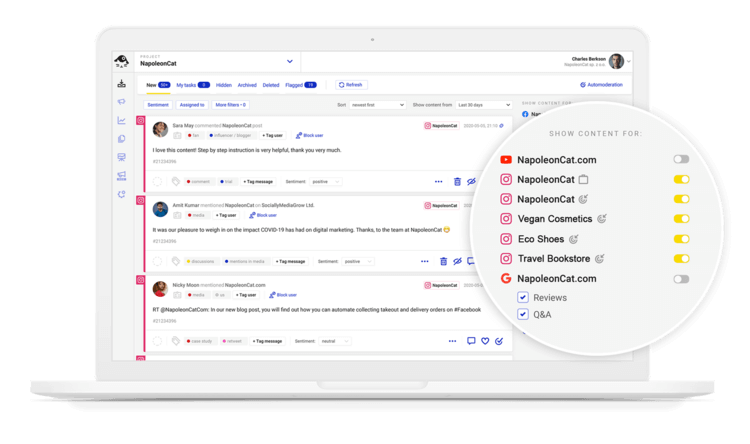
Simplify Social Media
Management with One Tool
- Manage & reply to comments and DMs in one place.
- Monitor ad comments from multiple accounts.
- Automate answers to repetitive questions.
- Schedule posts to multiple accounts, on desktop.
- Analyze performance and monitor hashtags.
- Keep track of your competition.
- Create or schedule in-depth reports in seconds.
You may also like:





